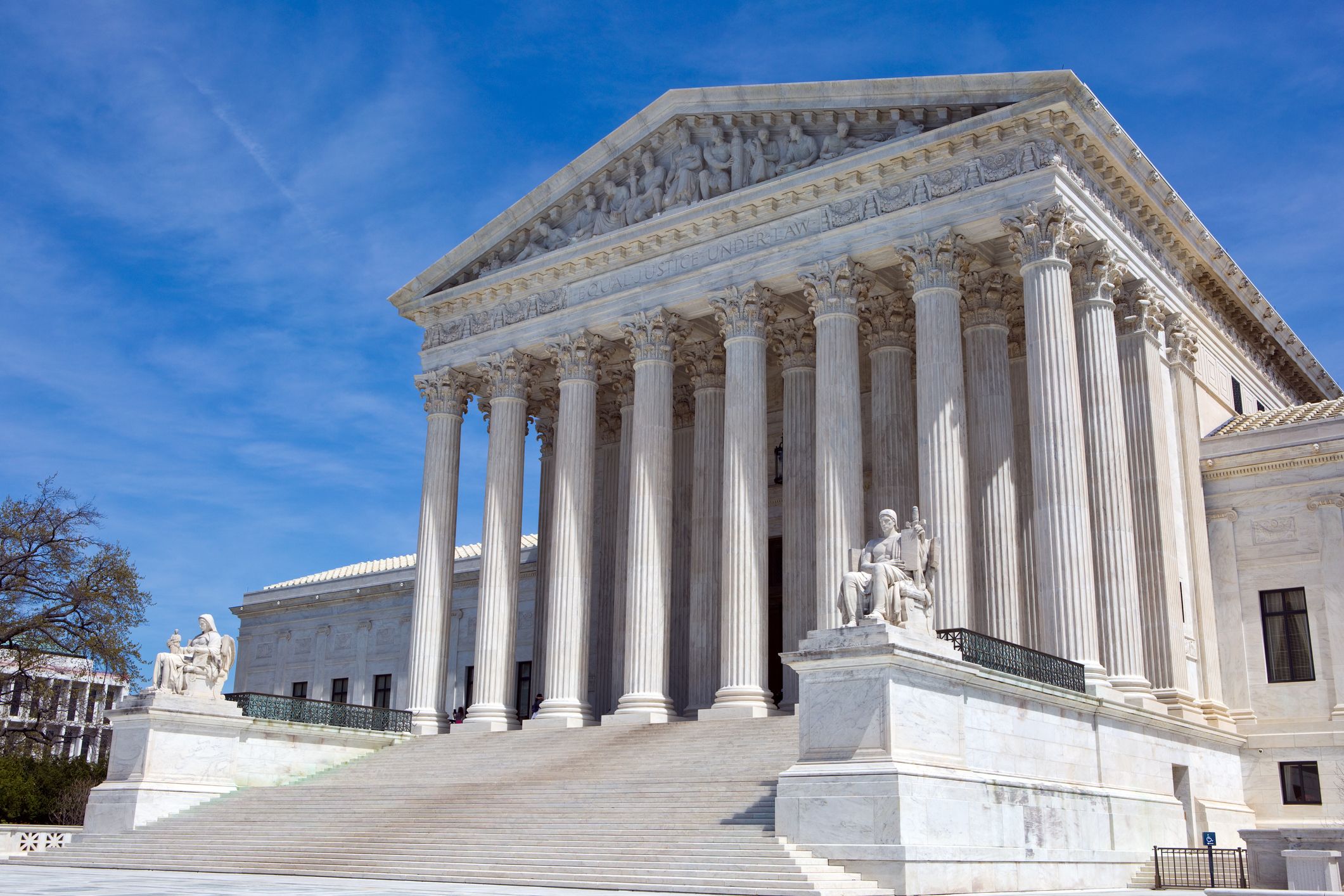
The legal standard governing police force provides inadequate guidance to police officers and the courts.
Imagine that you agree to participate in a game or competition of some sort, one that you are not intimately familiar with. Perhaps the first thing you would do is review the rules. After all, you cannot train, practice, or prepare appropriately without knowing what you can and cannot do. But when you receive the rulebook, you find it consists of exactly three words: “Be objectively reasonable.” That is not very helpful, is it?
The scenario above roughly describes the constitutional regulation of police use of force in the United States. The Fourth Amendment rules governing the use of force provide little guidance, and even this minimal guidance is often sloppily applied. Those problems will need to be fixed if the nation is to solve its current crisis of confidence over law enforcement.
In 1989, the U.S. Supreme Court decided Graham v. Connor, which held that police use of force was to be analyzed under the Fourth Amendment, “which guarantees citizens the right ‘to be secure in their persons . . . against unreasonable . . . seizures.’” The Court held that the use of force was constitutional if it was “objectively reasonable,” and it purported to provide some guidance to lower courts about how they were to make that determination. That guidance came in three parts.
First, the Court wrote that “the ‘reasonableness’ of a particular use of force must be judged from the perspective of a reasonable officer on the scene, rather than with the 20/20 vision of hindsight.” In other words, the objective reasonableness of a use of force depends on the subjective knowledge and perception of the officer involved, a concept that has been described as “subjective objectivity.” If, for example, it was reasonable for the officer to perceive at the time that the suspect was armed with a knife, courts will review the use of force as if the suspect was armed with a knife even if later investigation determined that the “knife” was actually a harmless, plastic toy.
Second, the Court provided what have come to be known as “the Graham factors.” It said that the inquiry into whether a particular use of force was reasonable “requires careful attention to the facts and circumstances of each particular case, including the severity of the crime at issue, whether the suspect poses an immediate threat to the safety of the officers or others, and whether he is actively resisting arrest or attempting to evade arrest by flight.”
Finally, the Court cautioned that officers could not be expected to make perfect decisions in use- of-force situations. In evaluating the reasonableness of a use of force, lower courts must keep in mind “the fact that police officers are often forced to make split-second judgments—in circumstances that are tense, uncertain, and rapidly evolving—about the amount of force that is necessary in a particular situation.”
For almost 30 years, the Graham standard has featured prominently in police training, literature, and agency policy. Its prevalence makes its substantial shortcomings all the more problematic.
Graham’s prohibition on 20/20 hindsight is entirely appropriate, but as University of Virginia School of Law Professor Brandon Garrett and I argue in a forthcoming article, the artificially narrow interpretation of the “objectively reasonable” standard is not. The legal construct known as the “reasonable man” is a civilian who is not trained in tactics and the use of force. One might assume that the “reasonable officer” is held to a higher standard, but that is not currently the case.
In Mullenix v. Luna, for example, the Supreme Court held that a reasonable officer could assume that shooting at a fleeing vehicle was allowed under existing law—even though doing so contradicts clear and long-standing best practices. Furthermore, in this particular case, the officer lacked appropriate training, the officer’s direct supervisor had instructed him not to shoot, and stop strips had already been deployed as an alternative means of ending the pursuit. Under the Court’s artificially narrow perspective, those factors could not affect a reasonable officer’s assessment of what was permissible.
The Supreme Court applied a similar logic in San Francisco v. Sheehan, in which it held that a reasonable officer interacting with an emotionally disturbed person could ignore not only decades of tactical research and well-established best practices, but also the training an officer personally received on those best practices. Would a reasonable officer truly act in a way that contradicts the norms and standards the police profession had developed over decades?
Both Mullenix and Sheehan fundamentally misunderstand what it means to be a “reasonable officer.” A reasonable officer is trained in and uses sound tactics, makes use of alternatives to force when possible, and uses force properly only when it is necessary.
The three Graham factors themselves can be irrelevant or misleading, as Rachel Harmon, a Professor at the University of Virginia School of Law, has argued. The crime’s severity is, at best, a loose proxy for dangerousness that officers can use in the absence of other information. At worst, however, it is entirely irrelevant, as when officers are defending themselves from a sudden attack by someone who was not suspected of committing any underlying crime or when arresting a fully compliant suspect even for a very serious crime.
The remaining factors are little better. For each factor, the answers are binary; someone is actively resisting or they are not. Although that simplistic distinction can help answer the question of whether force was justified, it provides no assistance in identifying what type of force or how much force was appropriate. And these factors, too, can be misleading. A hyper-obese octogenarian may satisfy the third factor by attempting to “evade arrest” by fleeing on foot, but that would hardly ever require a forceful response.
There is a similar problem with Graham’s assertion that use-of-force incidents require officers to make “split-second judgments—in circumstances that are tense, uncertain, and rapidly evolving.” That can certainly be the case. But as I have written elsewhere, that is not an accurate description of most use-of-force situations. Dr. James Fyfe, a New York City Police Department police lieutenant and a leading use-of-force scholar in the 1970s and 1980s, described the assumption that use-of-force incidents typically turn on last-minute decisions as the “split-second fallacy.”
Yet many lower courts have adopted the “split-second” assumption, focusing on the precise moment at which force was used rather than looking more broadly at whether an officer’s tactical decisions that led up to the use of force were reasonable. Imagine, for example, an officer standing within arm’s length of a paraplegic suspect sitting in the middle of an empty parking lot aggressively waving a knife. By focusing solely on the threat to the officer in that moment, deadly force would certainly seem appropriate. But that narrow view misses two important points. First, did officers unreasonably create a dangerous situation? After all, the “split-second” nature of the use-of-force decision depends in large part on the officer’s tactical choice to approach. Second, when the threat manifested, were there reasonably safe options other than using force? If, for example, the officer could have easily stepped away from the suspect and taken cover behind a squad car, the choice to shoot would seem quite problematic.
“Objective reasonableness” is an appropriate touchstone for regulating police force, but the sloppy and ill-informed way the Graham standard has been defined by the Supreme Court and then applied by lower courts has created real problems. Those problems are eminently fixable. There is a growing understanding among the police community, including by professional organizations like the Police Executive Research Forum, that the rote recitation of “be objectively reasonable” provides insufficient guidance to officers in the field.
The use of force is not a game or competition. But it is, and it must be, governed by rules. Those rules must be flexible, given the volatility of use-of-force incidents, but they must also provide meaningful guidance to the officers who apply them and to the courts who review use of force by officers. The failure to do so results in the dilution of constitutional rights.
This essay is part of a fifteen-part series, Regulating Police Use of Force.




